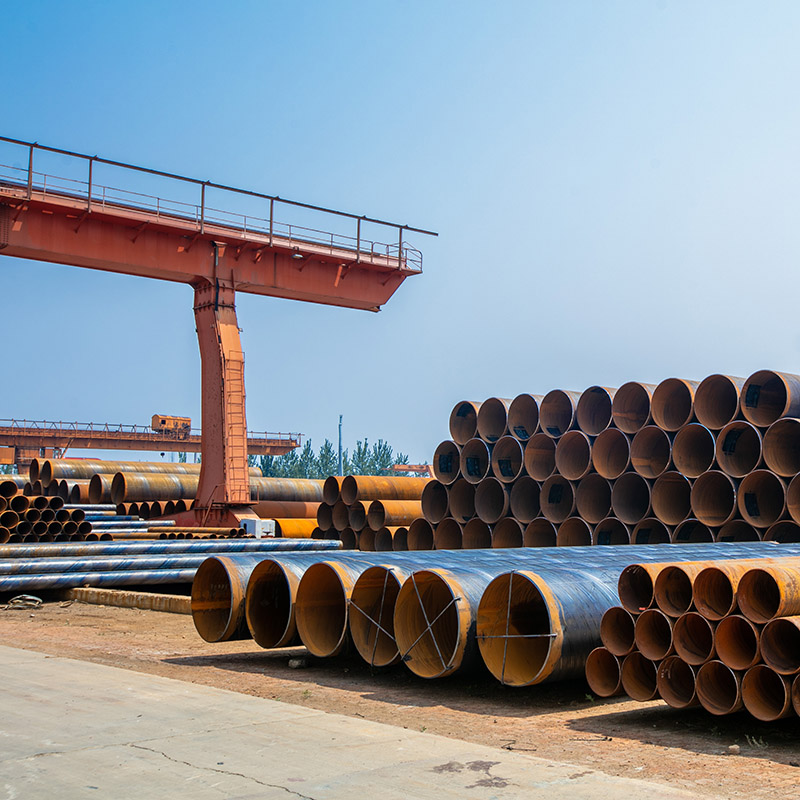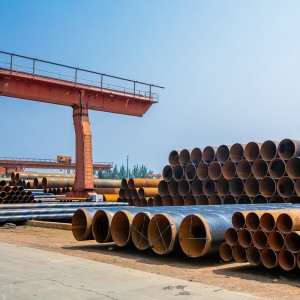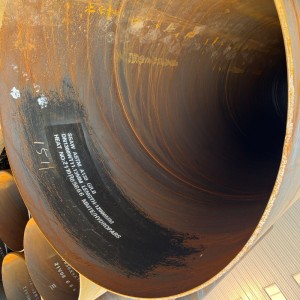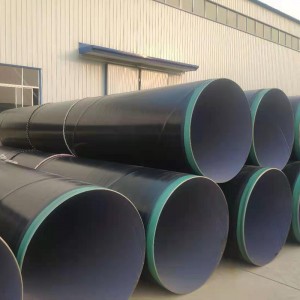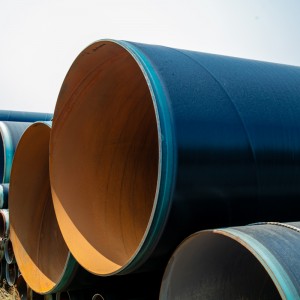High Quality Large Diameter Piling Pipe
We introduce high-quality large diameter piling pipes, which are the ideal solution to meet the ever-changing needs of construction and infrastructure development. As the industry witnesses a significant increase in the size of piling pipes, the need for strong and reliable materials has never been more urgent. Our spiral welded large diameter steel pipe piles are designed to meet these challenges, ensuring superior performance and durability in a variety of applications.
Designed to withstand the rigors of heavy construction, our high-quality, large diameter piling pipes provide the strength and stability required for foundation support. The spiral welding technology used in our production process ensures a seamless and strong structure, minimizing the risk of failure and maximizing service life. Whether you are involved in commercial, residential or infrastructure projects, our piling pipes are the perfect choice to meet your needs.
Product Specification
|
Standard |
Steel grade |
Chemical composition |
Tensile properties |
Charpy Impact Test and Drop Weight Tear Test |
||||||||||||||
| C | Si | Mn | P | S | V | Nb | Ti | CEV4)(%) | Rt0.5 Mpa Yield strength | Rm Mpa Tensile Strength | Rt0.5/ Rm | (L0=5.65 √ S0 )Elongation A% | ||||||
| max | max | max | max | max | max | max | max | Other | max | min | max | min | max | max | min | |||
| L245MB |
0.22 |
0.45 |
1.2 |
0.025 |
0.15 |
0.05 |
0.05 |
0.04 |
1) |
0.4 |
245 |
450 |
415 |
760 |
0.93 |
22 |
Charpy impact test: Impact absorbing energy of pipe body and weld seam shall be tested as required in the original standard. For details, see the original standard. Drop weight tear test: Optional shearing area |
|
|
GB/T9711-2011(PSL2) |
L290MB |
0.22 |
0.45 |
1.3 |
0.025 |
0.015 |
0.05 |
0.05 |
0.04 |
1) |
0.4 |
290 |
495 |
415 |
21 |
|||
| L320MB |
0.22 |
0.45 |
1.3 |
0.025 |
0.015 |
0.05 |
0.05 |
0.04 |
1) |
0.41 |
320 |
500 |
430 |
21 |
||||
| L360MB |
0.22 |
0.45 |
1.4 |
0.025 |
0.015 |
1) |
0.41 |
360 |
530 |
460 |
20 |
|||||||
| L390MB |
0.22 |
0.45 |
1.4 |
0.025 |
0.15 |
1) |
0.41 |
390 |
545 |
490 |
20 |
|||||||
| L415MB |
0.12 |
0.45 |
1.6 |
0.025 |
0.015 |
1)2)3 |
0.42 |
415 |
565 |
520 |
18 |
|||||||
| L450MB |
0.12 |
0.45 |
1.6 |
0.025 |
0.015 |
1)2)3 |
0.43 |
450 |
600 |
535 |
18 |
|||||||
| L485MB |
0.12 |
0.45 |
1.7 |
0.025 |
0.015 |
1)2)3 |
0.43 |
485 |
635 |
570 |
18 |
|||||||
| L555MB |
0.12 |
0.45 |
1.85 |
0.025 |
0.015 |
1)2)3 | Negotiation |
555 |
705 |
625 |
825 |
0.95 |
18 |
|||||
| Note: | ||||||||||||||||||
| 1)0.015 ≤ Altot < 0.060;N ≤ 0.012;AI—N ≥ 2—1;Cu ≤ 0.25;Ni ≤ 0.30;Cr ≤ 0.30;Mo ≤ 0.10 | ||||||||||||||||||
| 2)V+Nb+Ti ≤ 0.015% | ||||||||||||||||||
| 3)For all steel grades, Mo may ≤ 0.35%, under a contract. | ||||||||||||||||||
| Mn Cr+Mo+V Cu+Ni 4)CEV=C+ 6 + 5 + 5 | ||||||||||||||||||
Product advantage
One of the main advantages of using large diameter piling pipes is their ability to withstand heavy loads. These pipes are designed to withstand tremendous pressure, making them ideal for deep foundation applications in large construction projects. Their large diameter also increases soil displacement, thereby enhancing stability and reducing settlement issues. In addition, the spiral welding process used in the manufacture of these pipes ensures a strong and durable bond, minimizing the risk of structural failure.
Product Shortcoming
The cost of producing high-quality large-diameter piling pipe can be higher than traditional options, which can affect project budgets.
In addition, the installation process can be more complex and time-consuming, requiring specialized equipment and a skilled workforce. If not managed properly, this can cause delays to project timelines.
Application
In the ever-growing world of construction and infrastructure development, the need for strong materials is paramount. One material that has received much attention is high-quality, large-diameter piling pipe. As construction projects increase in size and complexity, the need for larger, more durable piling solutions becomes paramount.
With the rapid development of urbanization and infrastructure projects, the diameter of piling pipes continues to increase to meet the needs of modern engineering. High-quality spiral welded large diameter steel pipe piles are essential to provide the necessary support and stability for various structures such as bridges, buildings and marine facilities. These pipes are designed to withstand huge loads and harsh environmental conditions, ensuring the longevity and safety of the projects they support.
As the construction industry continues to evolve, the importance of high-quality large diameter piling pipe cannot be overstated. Our commitment to quality and innovation ensures that we remain a trusted partner to the construction industry, providing the essential materials needed for future infrastructure. Whether you are involved in a large project or a small construction project, our large diameter piling pipes provide you with the strength and reliability you need.
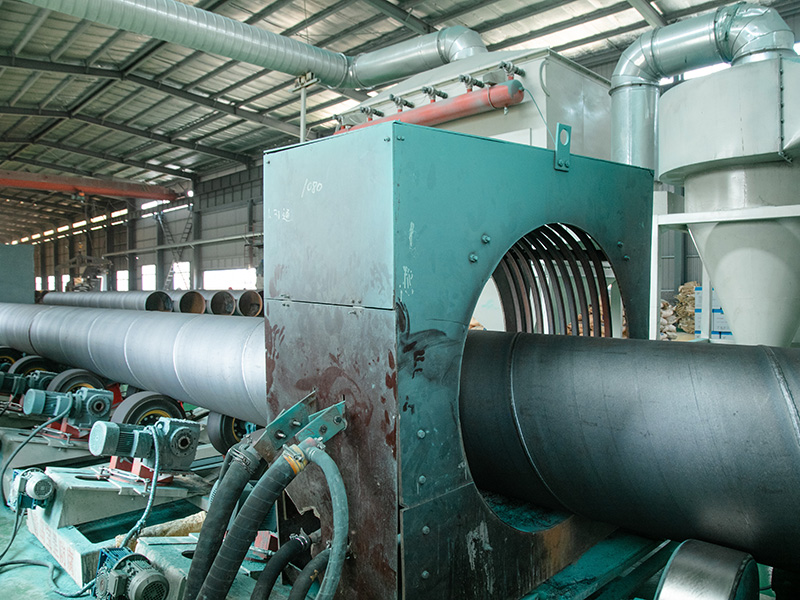
FAQS
Q1:What is large diameter piling pipe?
Large diameter piling pipes are cylindrical structures used to support heavy loads in construction projects. Their increased diameter provides greater loadbearing capacity and is ideal for deep foundations in challenging soil conditions.
Q2:Why choose spiral welded steel pipe piles?
Spiral welded steel pipe piles are known for their superior strength and durability. The spiral welding process ensures a continuous seam, which enhances the structural integrity of the pipe. This method also allows the production of larger diameter steel pipes to meet the growing demands of modern construction.
Q3:Where are these pipes made?
Our highquality large diameter piling pipes are manufactured in Cangzhou, Hebei Province. Our factory was established in 1993 and covers an area of 350,000 square meters with total assets of RMB 680 million. We have 680 dedicated employees dedicated to producing topquality piling solutions that meet the stringent requirements of the construction industry.

